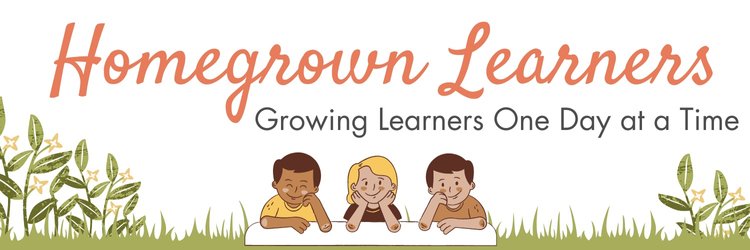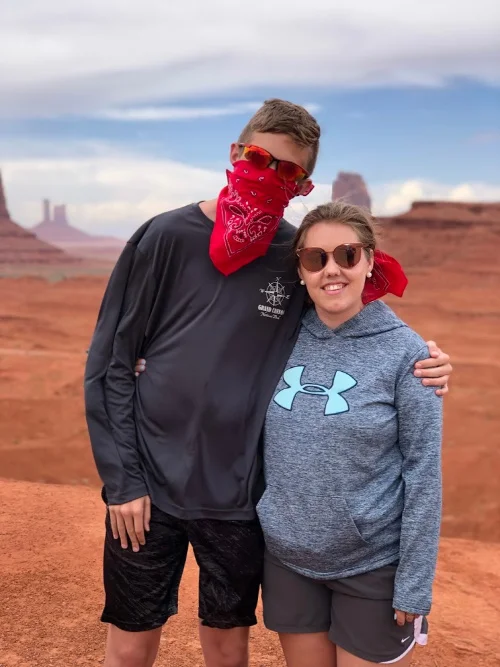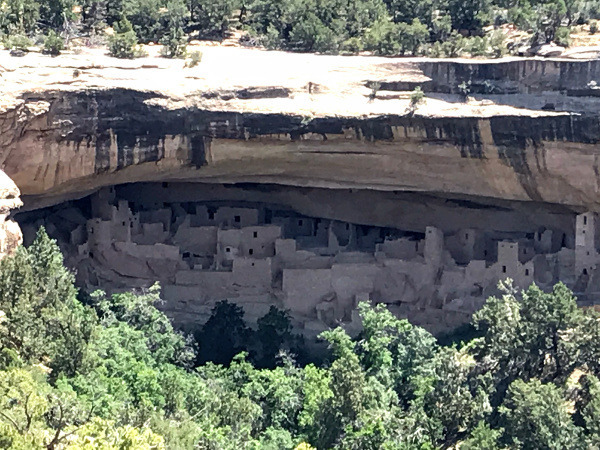Our trip to the Colorado Plateau began with a day at The Grand Canyon.
As we continued to drive northward into Utah we watched the landscape change. Our tour director began to talk to us a lot about Indian reservations and the practice of sending American Indians in the late 1800s and early 1900s to Indian Boarding Schools.
How had I missed this part of American history?
We watched a movie with Judy Garland - The Harvey Girls - and learned the history of the railroad coming through the west.
So many movies have been filmed in Monument Valley. My son said he felt like he was in the movie “Cars”.
I remarked to my husband that the kids were learning more on this trip than they ever could have sitting at home reading history books (even the best living history books). There is nothing like schooling on the road and traveling with an expert guide!
(Read Part I to hear about how we experienced the American Southwest this summer with Trafalgar’s Colorful Trails of the Southwest Tour.)
Monument Valley
When we arrived in Monument Valley (in the heart of a Navajo reservation) it was late afternoon. The weather was getting cool and it was quite windy. Our director handed out bandanas, and (as you can see) my son used his to its full potential.
I knew from our itinerary that we would be having a jeep tour of Monument Valley and then eating dinner prepared by the Navajo, with a little bit of music afterwards.
None of us were very familiar with Monument Valley, but quickly recognized it from so many iconic photographs we had seen over the years.
Monument Valley is like a national park, but it falls within the jurisdiction of the Navajo Nation's 27,425-square-mile (71,000 square kilometers) territory in the Four Corners region of the United States. Of that 17 million acres, more than 91,000 acres are set aside as Monument Valley Tribal Park — a space larger than Arches National Park. - source
Taking a tour led by a Navajo was a wonderful experience. We were able to go down into Monument Valley, off of the paved roads, and learn the names of the different monuments and a more detailed history.
I was, again, very thankful for our Trafalgar guide (Gordon), because he was well versed in the history of this area. It is part of our nation’s history that I think we could easily gloss over or even miss.
I was sitting in the front of our tour bus on this day and asked our guide a lot of questions. He gave me book recommendations and subject areas to further research with the kids when we got home.
(I was in homeschool mama heaven!)
White people recognize the valley from the movies, but that’s the extent of it,” says Martin Begaye, program manager for the Navajo Parks and Recreation Department. “They don’t know about its geology, or its history, or about the Navajo people. Their knowledge is very superficial.”
- The Smithsonian Magazine
I’m so thankful we could go deeper - beyond the “superficial” knowledge, and really talk about the problems the Indians have faced over the past centuries, and the problems they still face today. Our guide mentioned Jim Thorpe - the football player - who had attended an Indian School in Pennsylvania. It was little things like this that kept my children engaged throughout our trip. (In fact, we are reading this book aloud right now because we wanted to find out more about Jim Thorpe and the schools.)
We needed to pinch ourselves a few times as we were riding in a jeep through Monument Valley. The beauty was overwhelming, especially with the sunset on the horizon. I never knew rocks could have so many beautiful colors. The kids were quiet - just taking it all in. We had been transported to a bygone era.
We ate dinner outdoors - prepared by the Navajos - and enjoyed some entertainment - then we were on our way again.
Our guide showed us a movie as we traveled - a documentary about the Navajo Code Talkers of WWII. I had NO IDEA! We will be reading about the Code Talkers later this summer!
After Monument Valley we traveled further north. Our tour bus pulled over and our director said, “I’m pretty tired. Think I’ll go home now.”
None of us were sure what he meant, but it quickly became obvious that we were in the spot (Mexican Hat, Utah) where Forrest Gump decided to stop running and return home! There were cars pulled over on the side of the road, and people were standing in the middle of the road taking pictures.
Doesn’t it look familiar to you? Grant had to get out and run down the road. I’m a total dope because you know what I did? I cried. I loved that movie so much and it was overwhelming to me that we were in that spot and it was so very beautiful.
(Forrest Gump movie night is coming up soon!)
We stayed that evening at the Desert Rose Inn (Bluff Utah) - but it was just a quick stop because we would be up and out the next morning at 7 a.m. and head to Mesa Verde National Park!
Mesa Verde National Park
Both of my children remembered reading many years ago (through some of the living books we had gotten in a Sonlight package) about the Anasazi cliff dwellings - those apartment style dwellings carved in the side of cliffs stick with a lot of people, I think!
Our guide pointed out that he would refer to this group of people as the Ancestral Puebloans.
Mesa Verde literally translates to “green table”, and as we were driving along the highway which borders one side of the park, you could see that long “green table” off to our side. We learned that these groups of Indians would scale the cliffs and create dwellings purely for self preservation. Farming was easier on the tops of the “tables” and enemies could be more easily spotted from a higher vantage point.
I wasn’t sure what to expect, but the intricacy and preservation of these cliff dwellings astounded all of us!
The above picture was our lunch view that day! We found a covered picnic spot (that our tour director staked out for us) and sat for an hour just listening to the birds and looking at these dwellings. It’s a lot to take in when you are sitting in front of it.
This particular area is called Cliff Palace. Building here began in roughly 1275 CE - and by the end of the 13th century these canyons were EMPTY. How and why the people disappeared is still a mystery. Another sobering fact: roughly 50% of the children born in this area died before the age of five.
And - wherever there is a bookstore I am sure to be. The gift shop had quite a good separate bookstore - I picked up a few books (I’ve listed them among the resources below.).
There could have been a lot more to see and do in Mesa Verde, but we had approximately 4 hours in the park.
Our tour, Colorful Trails of the Southwest, was designed to highlight many of the sites on the Colorado Plateau. We got a wonderful overview of the area, and I would love to go back one day and focus specifically on just a couple of the parks we were only able to briefly see. The biggest gift we received was being able to steep ourselves in Native American culture. We gained knowledge, appreciation, and a reverence for this group of people who have historically been marginalized all in the name of “progress”.
Subjects to explore:
Navajo Code Talkers of WWII
Indian Boarding Schools
The Harvey Girls
Railroad Expansion
Anasazi Cliff Dwellings - What happened to the people there?
Resources for Learning More About Monument Valley and Mesa Verde
House of Rain: Tracking a Vanished Civilization Across the American SouthwestThe Haunted Mesa: A NovelIn Search of the Old Ones: Exploring the Anasazi World of the SouthwestA Family Guide to the Grand Circle National Parks: Covering Zion, Bryce Canyon, Capitol Reef, Canyonlands, Arches, Mesa Verde, Grand Canyon (Gone Beyond Guides)Life Among the Anasazi (Ancient Americas)Mustang: Wild Spirit of the WestMonument Valley: Navajo Nation Natural Wonder (Companion Press Series)Chester Nez and the Unbreakable Code: A Navajo Code Talker's StoryCode Talker: The First and Only Memoir By One of the Original Navajo Code Talkers of WWIIUnsung Heroes of World War II: The Story of the Navajo Code TalkersThe Unbreakable CodeAppetite for America: Fred Harvey and the Business of Civilizing the Wild West--One Meal at a TimeDiary of a Waitress: The Not-So-Glamorous Life of a Harvey GirlThe Indian School (Trophy Chapter Book)Undefeated: Jim Thorpe and the Carlisle Indian School Football TeamAway from Home: American Indian Boarding School Experiences, 1879-2000
This is Part II in the Colorado Plateau Series. Other posts can be found here:




























